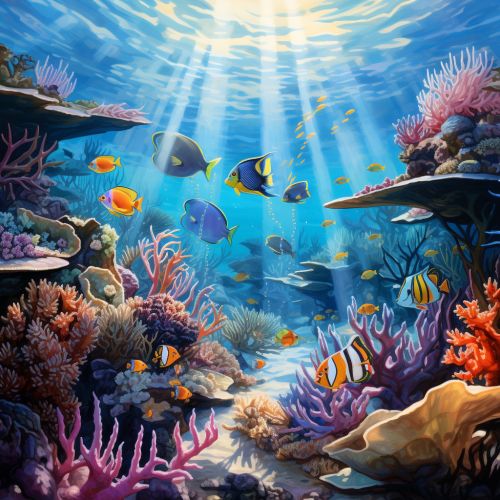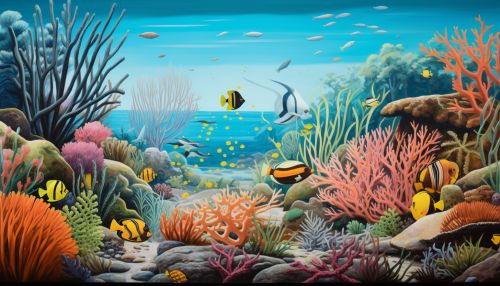Biological Oceanography
Introduction
Biological oceanography, also known as marine biology, is the study of the plants, animals, and other organisms inhabiting the oceans. It is a branch of marine science that involves the examination of the organisms that inhabit the oceans and the interaction of these organisms with their physical and chemical environment.


History of Biological Oceanography
The history of biological oceanography can be traced back to the ancient Greeks, who were the first to record observations of marine life. However, it was not until the 19th century that the field began to take shape as a distinct discipline. During this time, expeditions such as the HMS Challenger expedition (1872–1876) contributed significantly to our understanding of marine biology by collecting data on ocean temperatures, currents, and marine life.
Marine Ecosystems
Marine ecosystems are among the largest of Earth's aquatic ecosystems. They include oceans, salt marsh and intertidal ecology, estuaries and lagoons, mangroves and coral reefs, the deep sea and the sea floor. These ecosystems are home to a wide variety of organisms, from microscopic phytoplankton and zooplankton to the largest animal on earth, the blue whale.
Phytoplankton and Zooplankton
Phytoplankton are the autotrophic (self-feeding) components of the plankton community and a key part of oceans, seas and freshwater basin ecosystems. They are microscopic organisms that live in watery environments, both salty and fresh. Some phytoplankton are bacteria, some are protists, and most are single-celled plants.
Zooplankton are small protozoans or metazoans (e.g. crustaceans and other animals) that feed on other plankton and are generally the key food source for small fish, whales, and birds. These organisms are crucial components of the marine food chain.
Coral Reefs
Coral reefs are some of the most diverse ecosystems in the world, housing tens of thousands of marine species. They are formed by colonies of coral polyps held together by calcium carbonate. Coral reefs are found in all three of the Earth's oceans that have portions in the tropics - the Atlantic Ocean, Indian Ocean and Pacific Ocean.
Marine Life
Marine life, or sea life or ocean life, refers to the plants, animals and other organisms that live in the salt water of the sea or ocean, or the brackish water of coastal estuaries. It represents a vast resource, contributing to the global economy and providing many other ecological services.
Marine Flora
Marine flora, including species such as seaweed and other marine algae, provide vital oxygen, food, and shelter to various marine life forms. They also play a crucial role in the carbon cycle, helping to absorb carbon dioxide from the atmosphere.
Marine Fauna
Marine fauna encompasses a broad range of animals, including fish, mammals, birds, reptiles, and invertebrates. These organisms have adapted to survive in the marine environment, developing unique physiological and behavioral characteristics.
Human Impact on Marine Life
Human activities have significantly impacted marine life and ecosystems. Overfishing, pollution, and climate change are among the most serious threats to marine biodiversity. These activities have led to a decline in marine species and have disrupted the balance of marine ecosystems.
Future of Biological Oceanography
The future of biological oceanography is likely to be shaped by advances in technology, such as remote sensing and DNA sequencing, which will allow scientists to study marine life and ecosystems in greater detail. Additionally, the increasing recognition of the importance of preserving marine biodiversity is likely to influence research and conservation efforts in this field.
